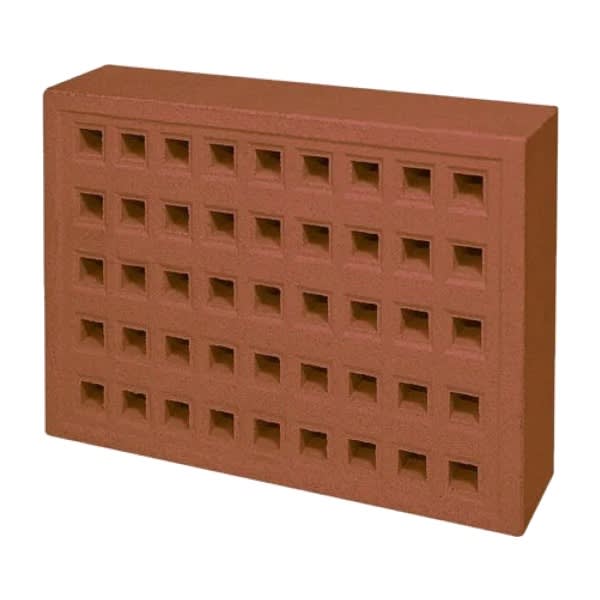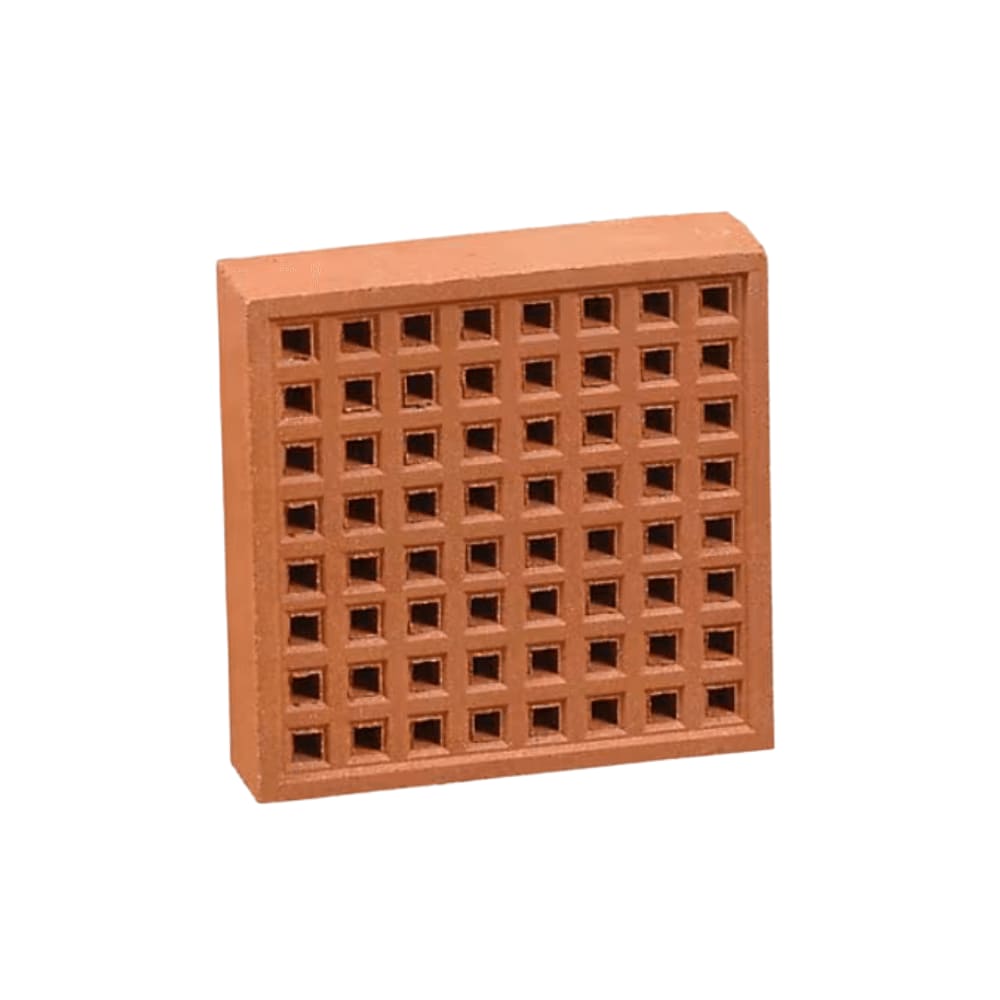Clay Air Bricks
(6 Products)Clay air bricks are vent units built into external walls to move air through subfloor voids and other enclosed spaces. Set above the damp-proof course, they help prevent moisture build-up under suspended timber floors and reduce the risk of rot or mould. Fired clay construction means they’re tough, weatherproof, and match traditional brickwork.
What Is A Clay Air Brick?
Clay air bricks are built into external walls, usually just above the damp-proof course, to allow air to pass through into underfloor spaces.
By encouraging airflow in these enclosed areas, they help prevent moisture from building up - something that can lead to timber decay, mould growth, or that familiar musty smell in older properties.
In some cases, it may also allow radon (naturally occurring, radioactive gas that forms when uranium in soil, rock, or water breaks down) or other ground gases to gather. Ventilation bricks help prevent that.
Ventilation and Building Health
When air is allowed to move freely through a void, it carries away moisture and prevents condensation from forming - a key defence against structural decay.
Clay air bricks are particularly useful because they’re robust, long-lasting, and need little to no upkeep. Most importantly, they do the job without relying on mechanical systems.
Modern building regulations (notably Documents C and F) outline specific guidance for subfloor and void ventilation. Purpose-made clay vent bricks often provide a straightforward way to comply with building regulations related to ventilation, especially when dealing with subfloor voids.
Free Air Space: What It Means
You might come across the term Free Air Space when looking at ventilation products.
This number tells you how much actual vent space there is in a brick (all the openings combined). It’s listed in mm² or cm² and used to calculate the right number of bricks for whatever area you’re ventilating.
If a brick has more free air space, you won’t need as many. But even then, it’s important to follow building regs or whatever the spec for the job calls for in terms of spacing and placement.
Why Choose Clay?
Clay is still one of the most dependable materials for ventilation bricks and for good reason. It lasts. Once fired, clay becomes extremely durable and handles the elements without much trouble. You’ll often see it in use on both new builds and period properties.
Visually, it has a warm, traditional look that pairs nicely with most types of brickwork. It also holds up better than plastic alternatives, which can deform or break down over time, especially in exposed spots.
Where They’re Commonly Used
Underfloor Ventilation
This is by far the most common application. Air bricks are typically fitted into outer walls, just above the damp-proof course and below the internal floor. Their job is to create a cross-ventilation flow underneath suspended floors to help prevent moisture accumulation.
Other Void Spaces
Sometimes you’ll find them used in other tight, enclosed parts of a building, such as under-stair cupboards or older roof voids. Anywhere air tends to sit still and moisture becomes a problem, ventilation bricks can help.
Decorative Use in Landscaping
Occasionally, clay air bricks are used in garden walls or outdoor spaces purely for appearance. They can add a bit of texture or pattern while still letting air through in low-pressure areas, such as behind a small retaining wall.
Key Benefits at a Glance
- Allows fresh air to move freely through subfloor areas and enclosed voids
- Built from tough, weather-resistant clay that handles long-term exposure
- Matches well with existing brickwork, especially on older properties
- Helps prevent problems like damp, mould, and timber decay
- Once in place, it needs very little attention or upkeep
Maintenance Tips
Clay air bricks are as close to maintenance-free as it gets, but like any ventilation product, they can become blocked over time.
Every so often, especially in autumn or after bad weather, it’s a good idea to check they haven’t been clogged with soil, cobwebs, leaves, or debris. A stiff brush or even a dry vacuum is usually all you need.
Frequently Asked Clay Air Bricks Questions
How Do Clay Air Bricks Work?
Air moves in and out through the holes in the brick, depending on how pressure and temperature shift inside and outside the space. That steady movement helps stop damp air from sitting still and causing moisture-related problems over time.
Can You Paint Them?
Yes - though you’ll need to use a breathable masonry paint. Blocking up the holes with thick paint or non-permeable coatings defeats the purpose, so take care to preserve airflow when decorating.
What Does ‘Free Air Space’ Mean?
This refers to the total open area within the brick that air can move through. It’s the actual space available for airflow, and it’s an important number when you’re calculating how many vents you’ll need in a given wall.
Can Mice Get Through Air Bricks?
Unfortunately, they can. Mice are capable of squeezing through surprisingly small gaps, sometimes as little as 6mm. If pest entry is a concern, consider installing fine-mesh covers (often stainless steel) that block rodents without affecting ventilation.








